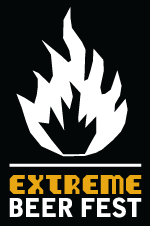Spring Training Stout is a foreign extra stout I brewed for Saint Patrick’s Day. It is not a clone of a particular beer, but it was strongly influenced by Guinness Draught.
One of the things that makes Guinness Draught unique is that it is believed a small amount of soured beer is blended in after fermentation which gives the beer a slight tartness in the finish. I imagine this would replicate the stouts of old that were stored in wood barrels that may or may not have exposed the beer to other organisms that could effect the flavor.
The easiest way to replicate the sour kick is to add acidulated malt to the beer. When I realized I was out of acidulated malt on brew day I drew off a pint of unfermented wort to sour before blending back into the rest of the beer. Before blending the soured beer I boiled it to kill whatever it was that soured the beer lest the entire batch become infected. The soured beer didn’t smell or taste like rotten eggs. The sourness had a similar intensity to sweet and sour sauce from Burger King. When boiling off the sour beer, the aroma from the steam filled our entire apartment. It wasn’t unpleasant, but it was noticeable.

After about ten days the bugs in the air at my apartment finally soured the wort I pulled from the rest of the batch.
I blended the sour beer in with the rest of the wort about three to four days before bottling to insure an equal and even distribution. The sourness was present in the aroma, along with the expected chocolate notes from the roasted barley, and a hint of diacetyl which in this type of beer is not inappropriate. The appearance was black, with a cream colored head with fair retention.

Fair head retention and lacing. I had to have a sip before snapping the picture.
The beer has medium high carbonation, but it felt a lot lower due to the full body of the beer. Mashing at a high temperature and generous amount of flaked barley gave the beer a fullness and a substantial mouthfeel. The beer was very smooth which is exactly what I was going for. The fullness of body did not hurt the drinkability at all.
The sour beer was prominent in the flavor, especially up front. It was more of a sweet and sour flavor, than a puckering type of sour you would expect in a Belgian sour like and Oud Bruin. The roasted barley did provide some balance and dry out the finish. I didn’t dislike the flavor, but I am not sure I got the balance quite right. Using a little less sour beer, or more roasted barley may well get the flavor where I wanted it to be. I will submit this in an upcoming homebrew competition to get some additional feedback.
Follow me on Twitter @JChalifour
Like The Would-be Brewmaster on Facebook
Share what beers you are drinking with me on Untappd











